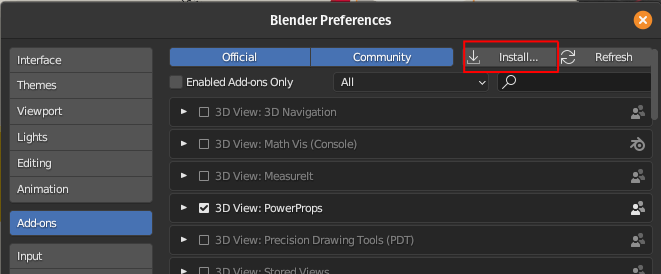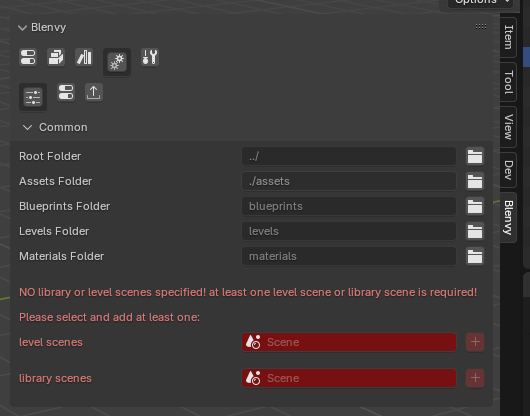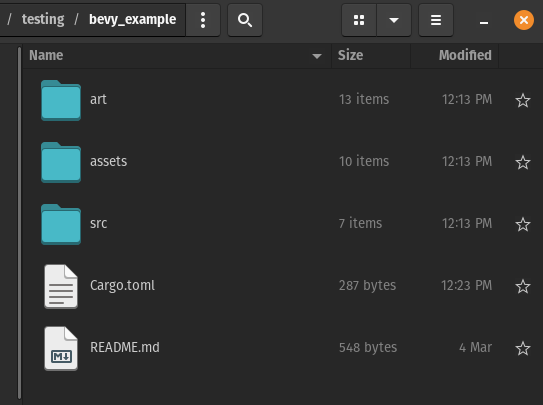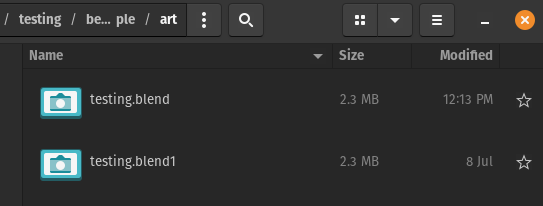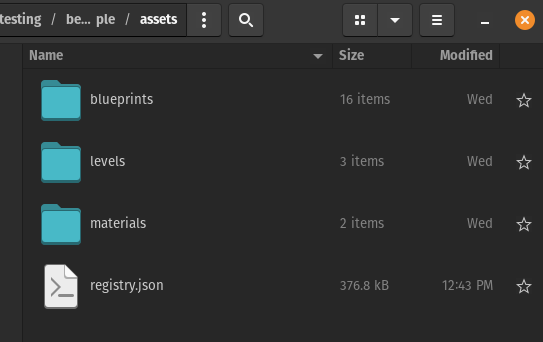This Blender addon gives you:
- an easy to use UI to add and configure your Bevy components inside Blender
- the UI is automatically generated based on a registry schema file, an export of all your registered Bevy components's information, generated by the registry export part of the Blenvy crate
- the ability to toggle components on/off without having to remove the component from the object
- an easy way to create blueprints/prefabs (just collections !) & levels
- a way to setup you assets for your levels & blueprints
- an automatic export of your level/world from Blender to gltf whenever you save your Blend file.
- export of used /marked collections as Gltf blueprints
- change detection, so that only the levels & blueprints you have changed get exported when you save your blend file
- export of material librairies
IMPORTANT !! if you have previously used the "old" add-ons (gltf_auto_export & bevy_components), please see the migration guide If you can I would generally recommend starting fresh, but a lot of effort has been put to make transitioning easier
- grab the latest release zip file
-
up to Blender 4.1 go to edit => preferences => add-ons, click on install and choose the path where
blenvy.zipis stored -
for Blender 4.2 , just drag & drop the zip file onto Blender to start the installation process
- create your Bevy project
- setup the Blenvy crate
- create a Blender project
- set your level & library scenes (the only things that are not pre-configured)
- create your blueprints & levels
- add components (remember to configure the Bevy side first )
- save your blend file at any point , the rest is done automatically (export of levels & blueprints, etc)
- setup the Blenvy crate for your project (see the crate's documentation for that), and compile/run it to get the
registry.jsonfile to enable adding/editing your components in Blender
The add-on comes almost completely pre-configured with sensible defaults, but you can set the following settings to your liking
The first tab (and the one that is open by default in a new project) contains the common settings:
you need to tell Blenvy
- what your level scenes are (what Blender scenes should become levels in Bevy)
- what your library scenes are (what Blender scenes will store your library of re-useable blueprints)
Blenvy is opinionated !
- keep you art/sources (usually not delivered with your game) seperate from your game assets
- keep your blueprints/levels/materials gltf files seperate
- this is the same folder as your Bevy projects main folder: the path here is relative to the current .blend file
- a path, relative to the root folder above, where you want to store your assets (delivered with your game)
- a path, relative to the assets folder above, where you want to store your blueprints
- a path, relative to the assets folder above, where you want to store your levels
- a path, relative to the assets folder above, where you want to store your materials
- what are the scenes in your .blend file that are levels/worlds
- library scenes: what are the scenes in your .blend file that contain your libraries of blueprints (that you then use in your levels)
If you want to use multiple blend files (recomended if your project starts to grow even a bit), use Blender's asset library etc, we got you coverred too ! There are only a few things to keep in mind
- mark your library scenes as specified above, but do NOT specify a level scene
- mark any collection in your scenes as "assets"
- choose "split" for the combine mode (as you want your gltf blueprints to be saved for external use)
- do your Blender things as normal
- anytime you save your file, it will automatically export any relevant collections/blueprints
- (optional) activate the material library option, so you only have one set of material per asset library (recomended)
- mark your level scenes as specified above ( personally I recommended NOT specifying a library scene in this case to keep things tidy, but that is up to you)
- configure your asset libraries as you would usually do, I recomend using the "link" mode so that any changes to asset files are reflected correctly
- drag & drop any assets from the blueprints library (as you would normally do in Blender as well)
- choose "split" for the combine mode (as you want your gltf blueprints to be external usually & use the gltf files generated from your assets library)
- do your Blender things as normal
- anytime you save your file, it will automatically export your level(s)
Take a look at the relevant example for more details
- for a detailed overview on how to add, edit, remove etc components please see here
- for a detailed overview on auto exporting gltf files please see here
- for a detailed overview of blueprints please see here
- for a detailed overview of blueprints please see here
Tip
you can right click on a Blueprint instance in your level scenes or press SHIFT + F to edit a Blueprint in a seperate temprary scene ! you can right click or press SHIFT + F to create a new empty Blueprint and an instance of it from your main scenes right click again & select the option to stop editing it, or
- I highly recomend (if you are using vscode like me) to use this excellent extension , works easilly and fast , even for the latest versions of Blender (v4.0 as of this writing)
- this article might also help out (easy enough to get it working on linux too)
This tool, all its code, contents & assets is Dual-licensed under either of
- Apache License, Version 2.0, (LICENSE-APACHE or https://www.apache.org/licenses/LICENSE-2.0)
- MIT license (LICENSE-MIT or https://opensource.org/licenses/MIT)

